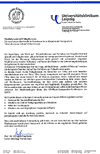Clinical Study
Clinical Study and Results
On this page you will find information about our clinical research, tests, the results and the medical opinions of professionals.
Since December 2001 the Universitäts-Frauenklinik in Leipzig/Germany (Gynaecological University Clinic) under the direction of Professor Vogtmann brought into action the music therapy “the breath of a new life” and assigned it as a remarkable success. To conduct the clinical study, this music was directly placed into the incubator by using a small special stereo equipment for 43 minutes.
The music therapy could improve in a very natural way the breath and heart frequency, the oxygen content in blood and brain, as well as the development of the temperature of the preemies and stabilize clearly even beyond the period of presentation.
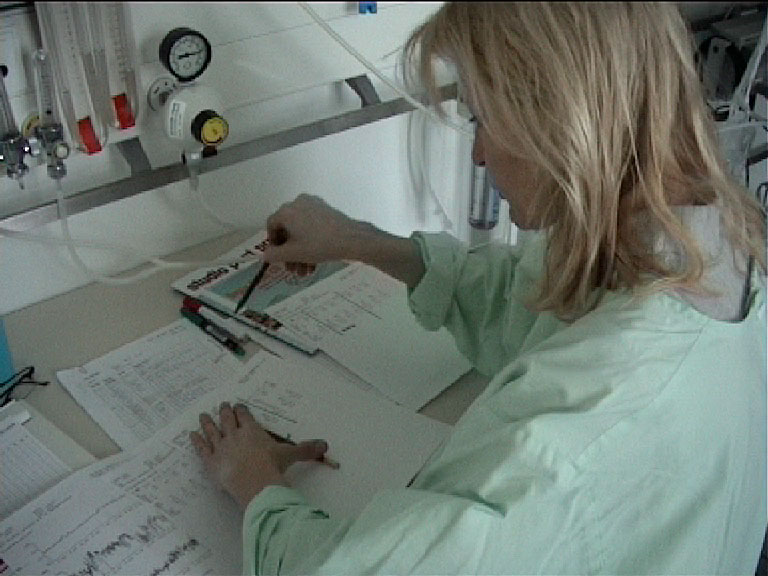
The measuring parameters were compared statistically after the baby’s care during the period of stimulation (with music) and during control times (without music).
The bases of the statistical evaluations are documented on the diagrams of the reports by the University Clinic in Leipzig/Neonatology.
Medical Opinion:
Prof. Dr. Christoph Vogtmann
Interview Prof. Vogtmann 2010
Medical opinion: Professor Vogtmann
Music therapy with prematurely born infants
Investigations on reactions of infants when playing the composition “breath of a new life” (Tibor Lévay).
About the consequences of music on body functions and behaviour of newborn children and particularly of premature infants today only a few secured results are known. Therefore the music is generally and systematically not used during the care of premature infants. Probably the meaning and importance for a stimulating development of premature infants with the use of music are underestimated. The goal of our investigations was the question whether the hearing of music has positive effects on measurable physiological parameters and on the behaviour of premature infants.
For this purpose premature infants with weights of around l000g and still with unstable breath functions were offered for 60 minutes one of Mr. Tibor Lévay composed and particularly arranged music (“the breath of a new life”).
Before, during and afterwards in the usual context of machine-technical monitoring, the breathing and heart frequency, oxygen saturation in the blood, as well as the central and peripheral body temperature were measured in a non invasive way and registered and accompanying events were logged.
These data were then analyzed by a third person, who themself was not part of the investigations. A combination of CD player and loudspeaker of SONY served for the rendering of the music.
In the result of this provisional investigation the following effects can be registered:
Rise of the oxygen saturation in the blood
Reduction of the decrease of saturation numbers per time unit
Decrease of the heart frequency
Approach of the peripheral – to the central body temperature
It refers throughout to positive effects which can be secured statistically on physiological infantile function parameters.
One later following investigation on a further group of children will clarify whether these results can be reproduced and whether the effects are bound to the offered music and thus are specific.
Professor Dr. Christoph Vogtmann in charge of the neonatology division
Medical Opinion:
Mrs. Dr. Monika Noecker-Ribaupierre
Medical opinion: Mrs. Dr. Monika Noecker-Ribaupierre
“The Breath of a New Life”
– Music for prematurely born babies by Tibor Lévay
Acknowledging the constantly improving technical situation of the medical intensive care, the survival of more and more immature infants becomes possible – survival in the time of growth, in which all sense organs are developed so far that they can receive sensory impulses, which affects considerably the development.
With an intensity of up to 110 db especially the hearing system is extremely unphysiologicaly stressed by the technical surrounding noise of an intensive care unit.
This increases the stress of a newborn, which can be viewed and measured, and favours thereby the development of restraining effects of stress to the entire organism of a premature infant. The fact that music works on calming down and stress-reducing was documented by numerous studies, especially in the USA.
Tibor Lévay´s composed music differs from all others offered so far: It aims particularly at this situation, by including on the one hand the surrounding noises or rather absorbs them. On the other hand also this music corresponds to the acoustic needs of small children through the particular musical organization. With simple sounds and hummed or sung melodies, as well as soft instrumental accompaniment this world of sounds creates a reassuring and wrapping feeling.
Adults who listened to the music of Tibor Lévay judge it in such a way, as one wishes it for these children: “as if the feeling of separation disappears, one feels secured, full of love and longing, one is affected in the soul “.
The music was created as a gentle assistance and natural cure – a music, which mediates live. It is not a prescription and it replaces no live contact, above all it can not replace the parents – however it should not be missing on any intensive care unit, if at certain moments nobody can be there for the child.
Munich, May 2003
Dr. Monika Noecker Ribaupierre
dipl. Music Therapist
Introducing:
| 1. | A. Y. | starting from | 2nd | life day |
| 2. | S. L. | starting from | 34th | life day |
| 3. | S. P. | starting from | 23rd | life day |
| 4. | P. J. | starting from | 25th | life day |
| 5. | P. M. | starting from | 11th | life day |
| 6. | S. M. | starting from | 24th | life day |
| 7. | F. J. | starting from | 3rd | life day |
Clinically stable
Stimulation time with the music: 2 – 6 times per day during 1 hour, day and night
From 22.03. to 19. 05. 2002
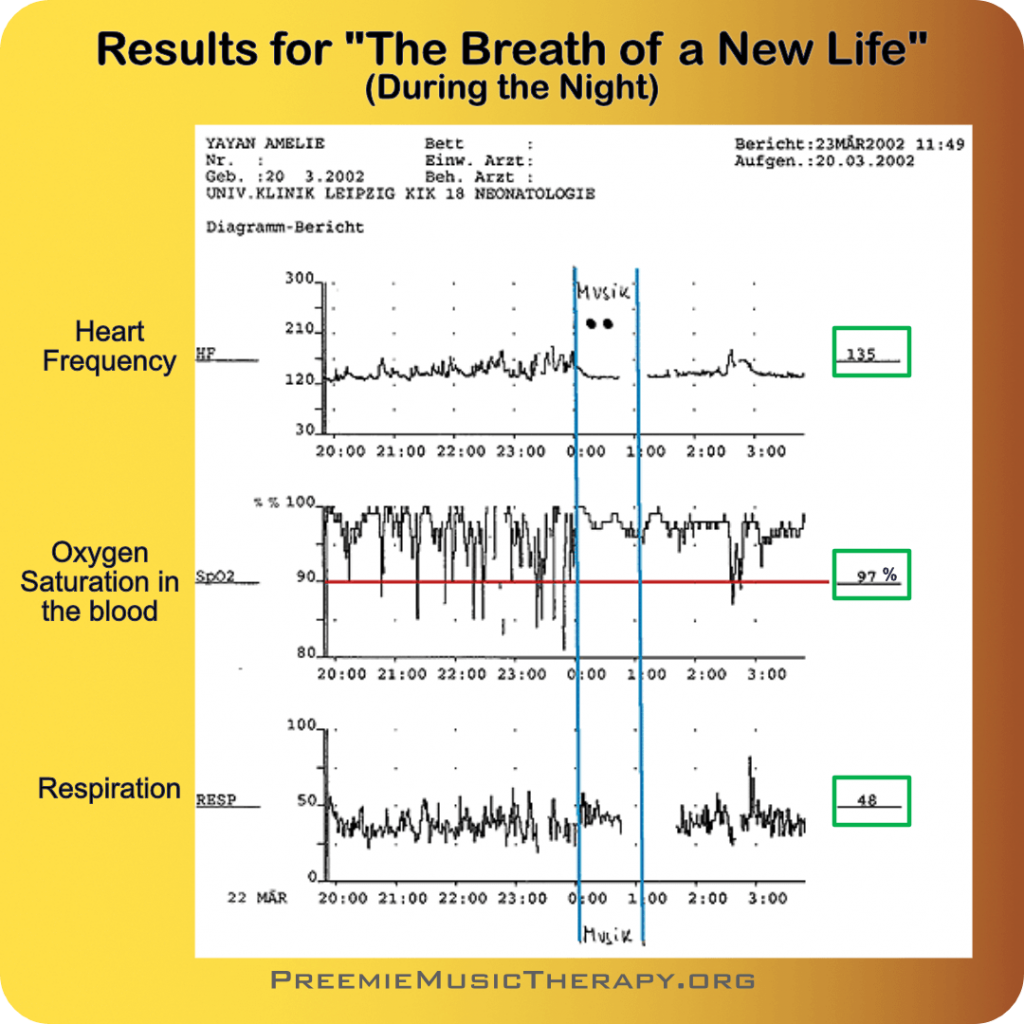
Measuring parameter:
- Basal heart frequency/ exact frequency per minute/ (HF)
- SpO2 – oxygen saturation/ 1 % exactly per minute
- Saturation decreases: Amounts, depth, duration until 1 minute
- Respiration rate/exact frequency per minute/(AF)
- Temperature distribution/ central -peripherial difference/(T1 – T2)
After the infants care the measuring parameters were statistically compared in the time of stimulation (with music) and control times (without music).
The bases of the statistic evaluations are the diagram reports from Universitätsklinik Leipzig/ Neonatologie.
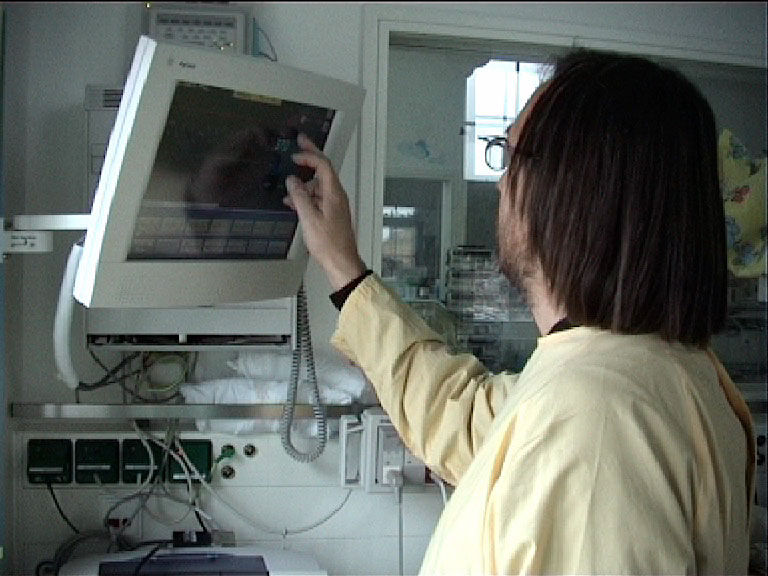
Clinical Results of "The Breath of a New Life"
Yayan's Results
Yayan’s heart rate was at 175 BPM, when the music started it calmed and began to stabilise at 135 BPM.
Before the music her oxygen saturation was dropping down to 81% which is at a critical level. Once the music started it improved and reached a stable level at 95-97%.
Her breathing also became more stable at 48. Before the music it fluctuated between 55 and 27.
The positive effects remained for the next 40 minutes after the music finished playing.
At 2:30 AM she had a drop in her SpO2, her breathing raced to 79, and her heart rate reached 170 BPM.
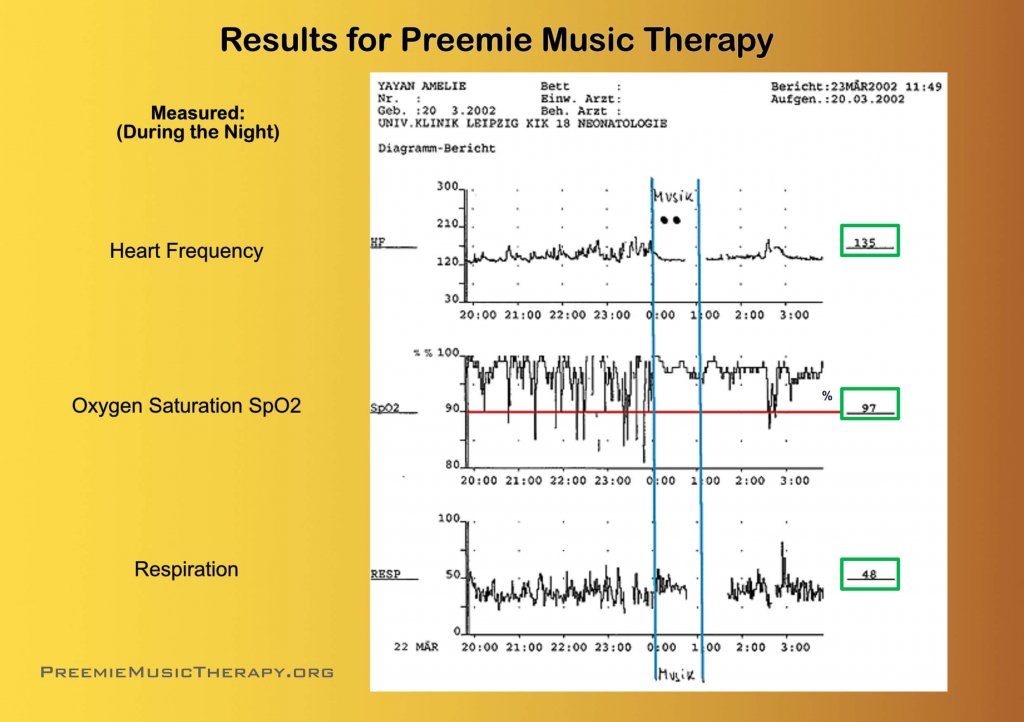
Justin’s Results
Justin’s heart rate reached 208 BPM before the music started to play. Once it started to play it stabilised to 196 BPM.
Prior the music his oxygen saturation was unstable and dropping down to 85%. Once the music started it improved and was at a stable level at 96-98%.
His breathing also became more stable and lowered to 50. Where we can see that before it fluctuated between 75 and 40.
To test the versibility of the music under different conditions before the music started, the nurses did Justin’s care routine. After the music finished, Justin was breastfeeding.
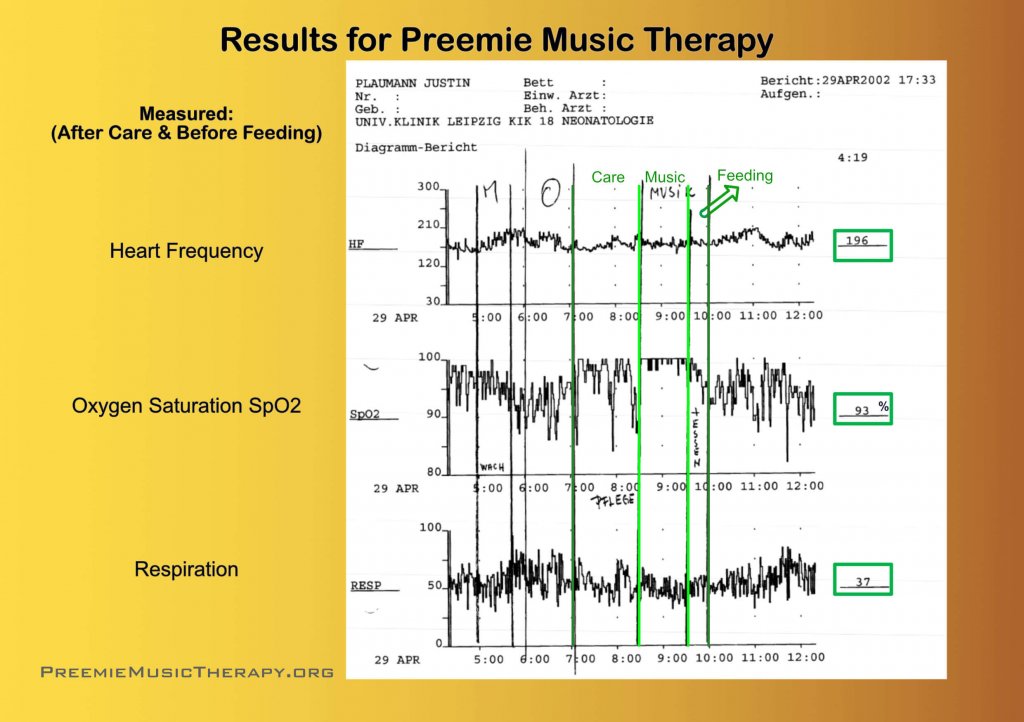
Sieber’s Results
Sieber’s heart rate was stable before the music started to play at 165 BPM. During the music it was at 159 BPM.
Prior the music his oxygen saturation was unstable and dropping down to 80% which is the critical zone. Once the music started it improved and was at a stable level at 96-100%.
His breathing also became more stable and lowered to 40. We can see that before it fluctuated between 53 and 30.
The positive effects remained for the next 40 minutes after the music finished playing.
At 14:00 PM his SpO2 started fluctuating again, his breathing rate increased 65, and his heart rate reached 166 BPM.
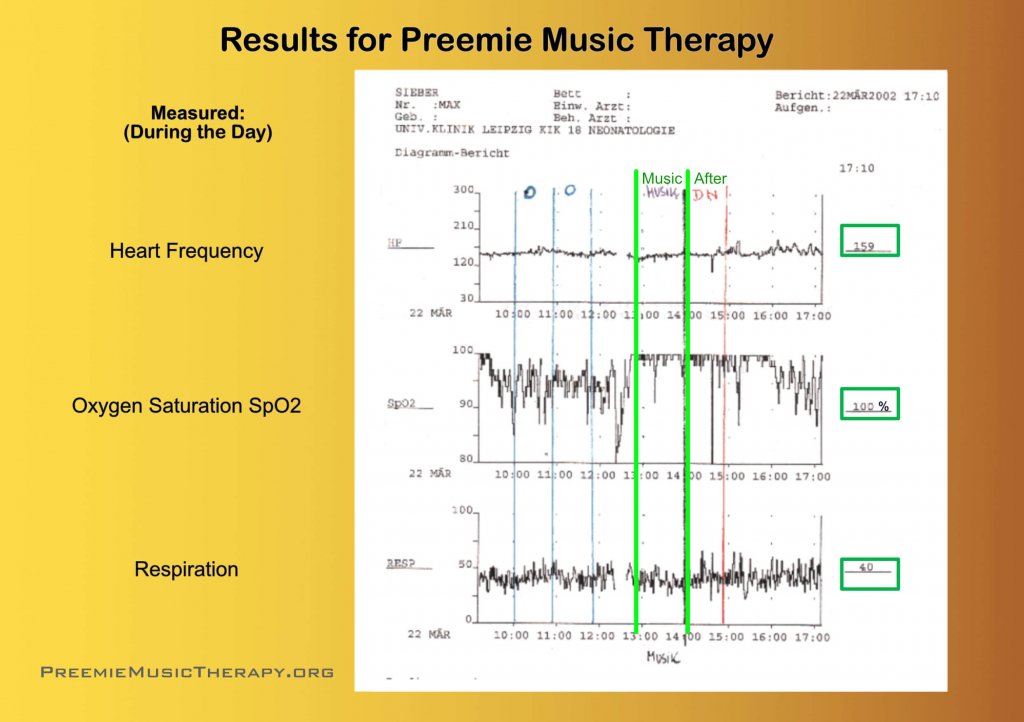
Results of Clinical Study
1. Basal heart frequency
The optimal heart frequency lies in the range between 100 and 150 per minute. On average the heart frequency is lower and more constant with music.
In the comparison:
Measurements with music
Measurements without music
The following values showed:
Optimum ~ 120 BPM
The normal heart rate for a premature baby is between 120-160 beats per minute.
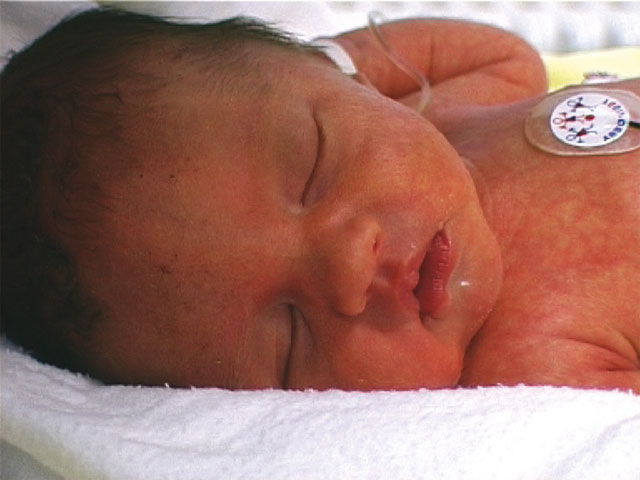
| Heart frequency | average value | maximum | minimum |
|---|---|---|---|
| with music | 135,7 BPM | 140,4 | 131,7 |
| without music | 143,2 BPM | 153,1 | 135,4 |
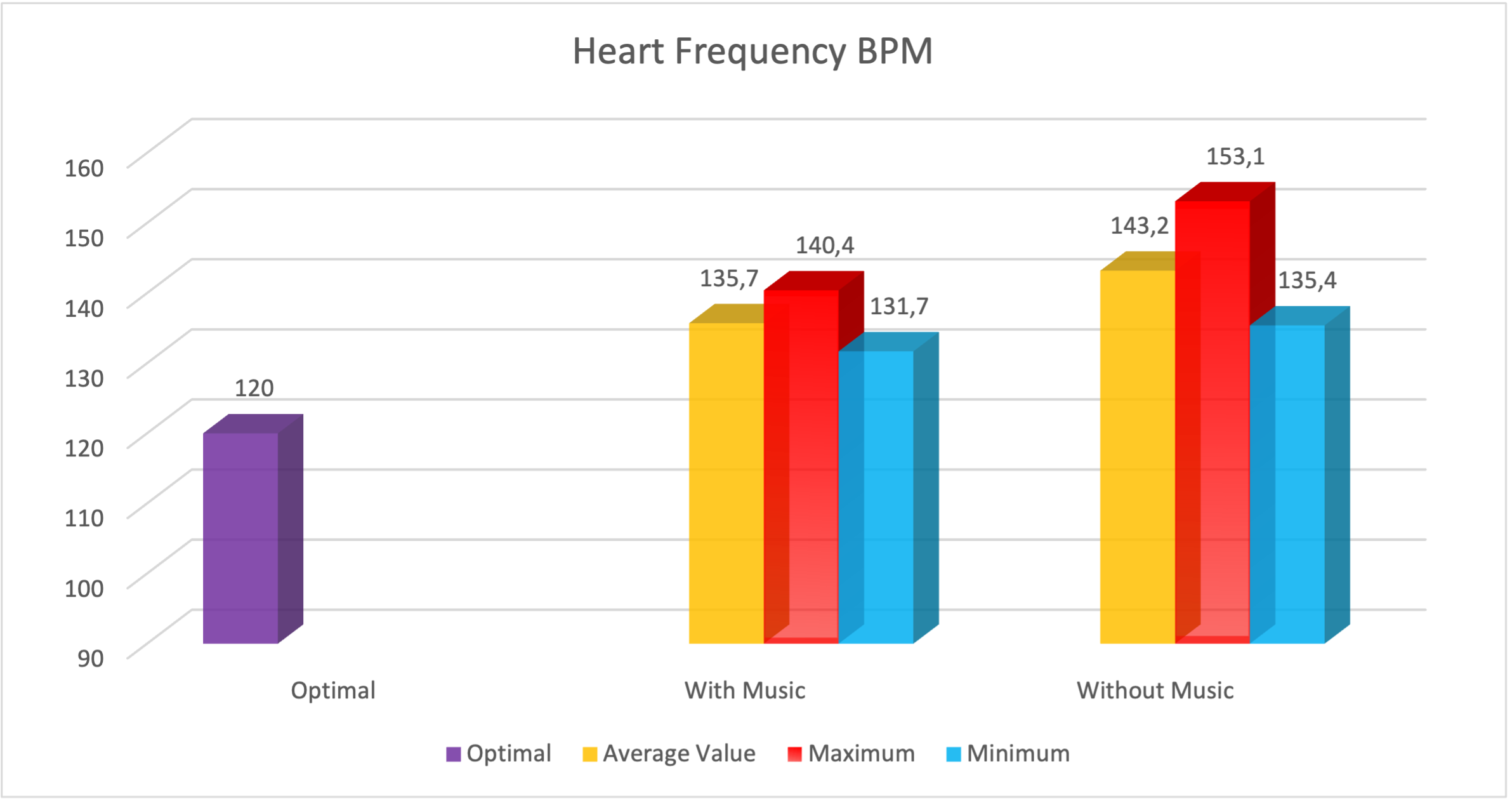
2. SpO2 – Oxygen saturation
With music the average values are more stable and a higher oxygen content was measured.
Optimum Average: 97-98%
| Oxygen saturation | average value | maximum | minimum |
|---|---|---|---|
| with music | 97,47 % | 98,75 | 93,35 |
| without music | 94,49 % | 96,27 | 91,20 |
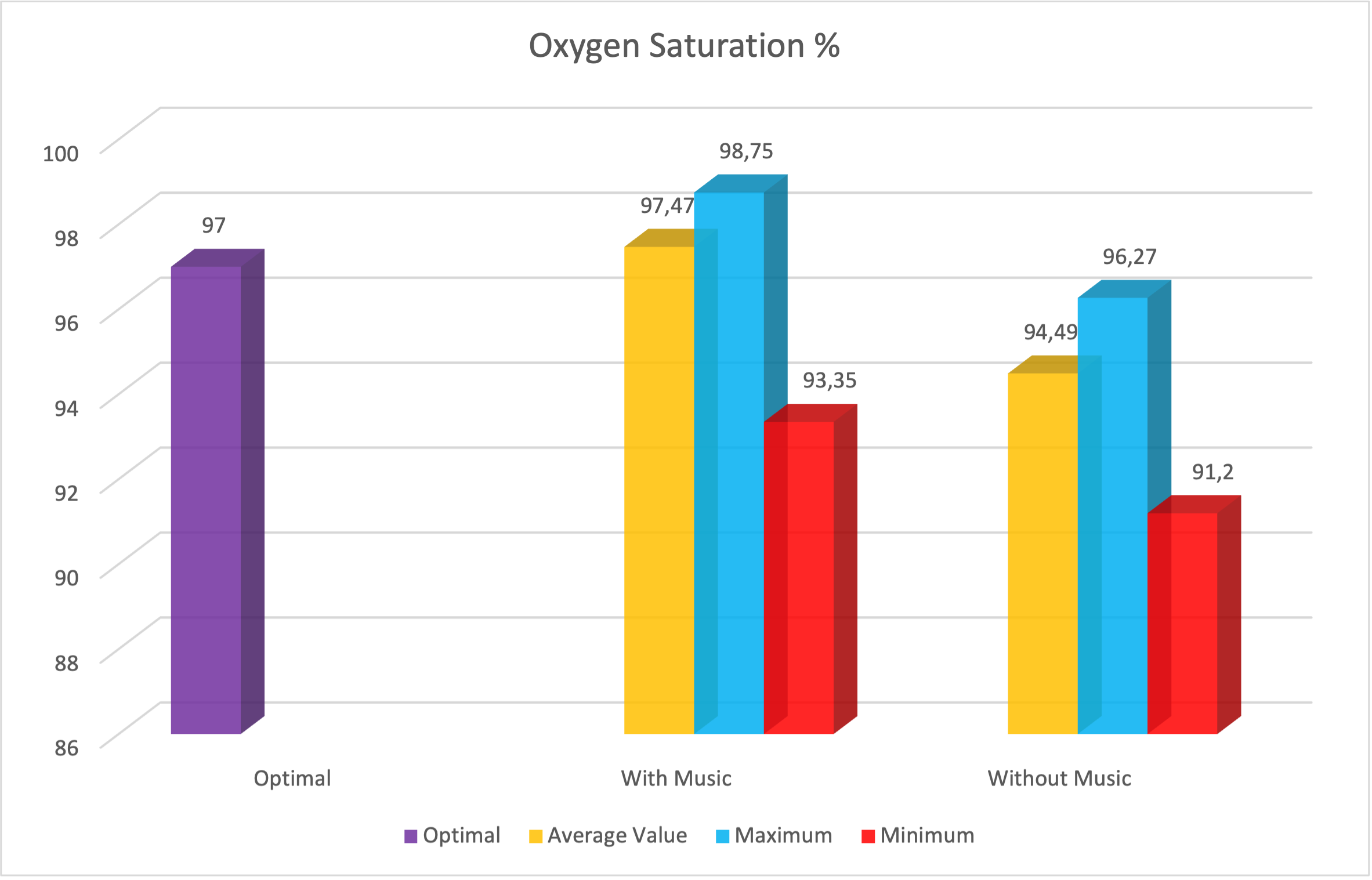
3. Oxygen Saturation (SpO2) Declines (drops)
Optimum SpO2: 97%.
This chart shows the largest benefit of the therapy.
The drops of oxygen saturation are responsible for the well-known damages. The graph shows the number of declines in the critical range of oxygen saturation between
80% and 90%. The result shows the number of occurred drops in oxygen saturation with the use of music therapy (minimal drops), compared without music.
This graph shows what drops in oxygen saturation look like.
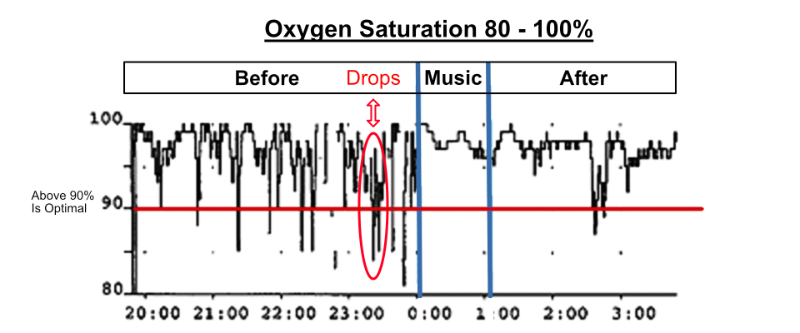
Below shows the SpO2 drops of 3 preemies.
Green Lines mark where the music is played.
Oxygen saturation above 90% is optimal.
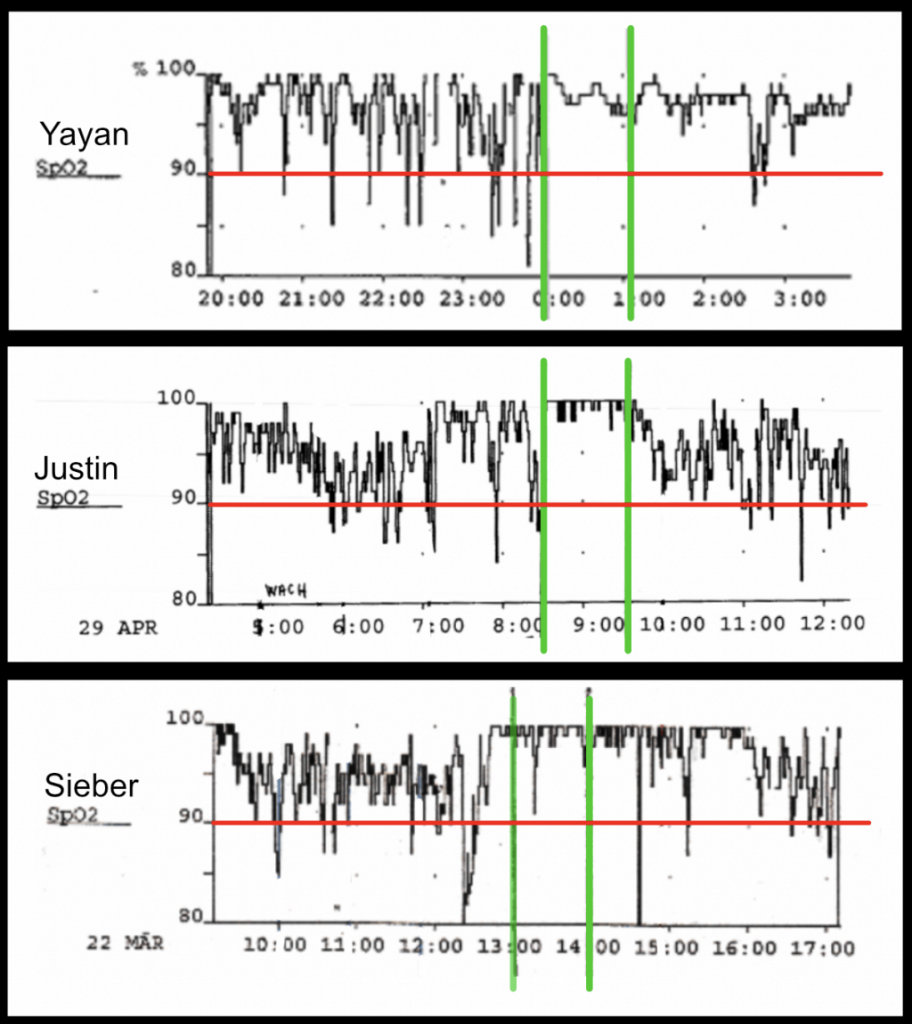
Result of 7 Premature Born Babies
i.e.: During a 60 hour period without music there were 98 drops at 90% Saturation.
i.e.: During a 60 hour period with music there were only 9 drops at the same SpO2 percentage.
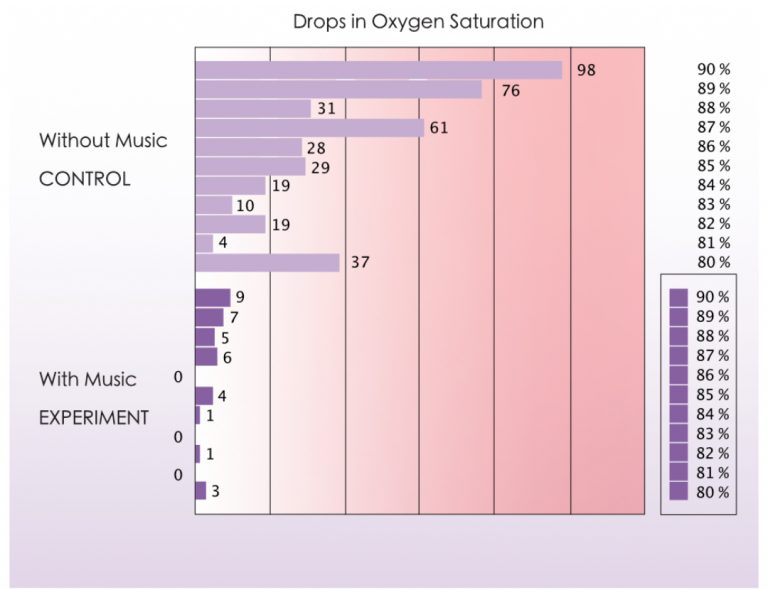
4. Respiration rate
With music a lower and more balanced respiration rate was obtained and is represented in the result.
Optimum ~ 50 BPM
| Respiration rate | average value | maximum | minimum |
|---|---|---|---|
| with music | 42,44 BPM | 49,9 | 36,64 |
| without music | 43,61 BPM | 56,22 | 34,74 |
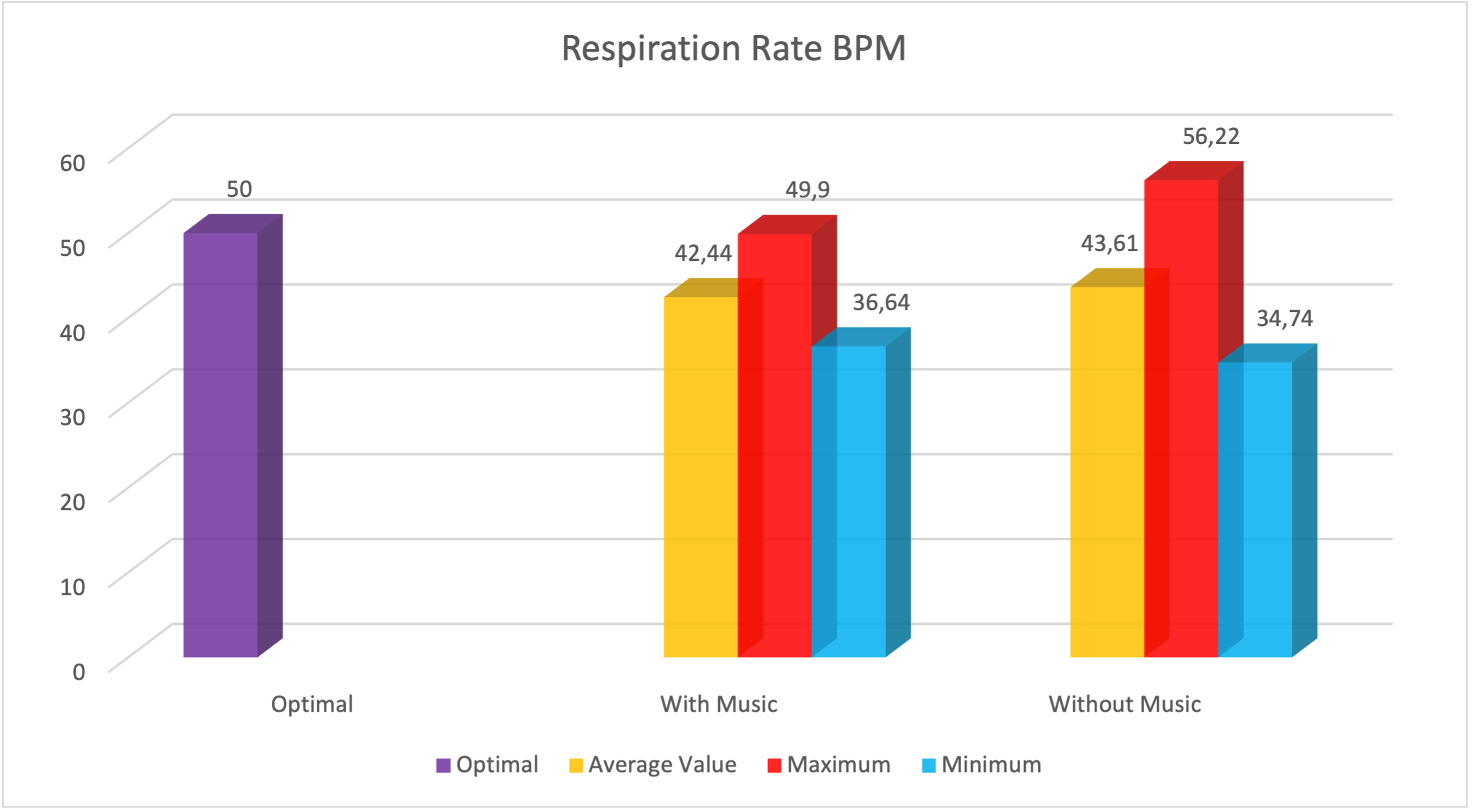
For the respiration, it is best for the results to be consistent, and not vary to much.
5. Temperature
Profile of central and peripherial temperature comparison.
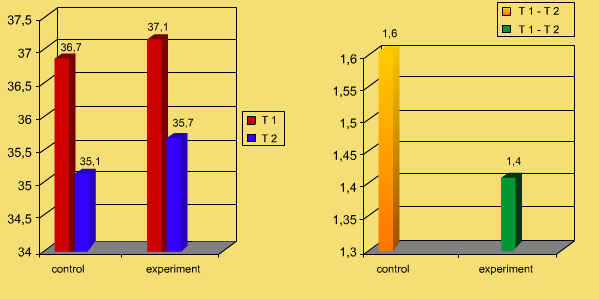
The evaluation shows an increase and an approximation of the central and peripherial temperatures when using music.
T1 = central temperature
T2 = peripherial temperature
Summary of Clinical Results
The clinical results have provided us with the insight that the 4 most important benefits of the music therapy.
1. Stabilising the heart rate.
2. Improving the breathing rate.
3. Improving the oxygen saturation.
4. These benefits and results remain for the next 40 – 60 minutes even after the music has played.
Click here to find out how best to apply the music therapy.
